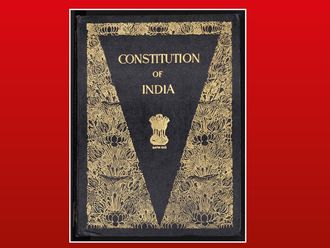Curcuma longa is a rhizomatous herbaceous perennial plant of the ginger family. That’s what Wikipedia calls it, but that is not the name by which Remona was introduced to it several years ago, several decades as a matter of fact.
What was the world doing in 1948 when she was — what, a little wisp of a lass aged 16? And where was she exactly when curcuma longa came striding into her life to stay forever?
Well, first question first: The world was recuperating in 1948 even as it was changing. A big war had concluded. One country was born somewhere in the Middle East and another country was granted its freedom, its right to independence.
A year earlier, when a British colonial curtain was descending and a tricolour — saffron, white & green — was simultaneously being unfurled; when British presence was departing Indian shores en masse in a flotilla of ships, Remona was, in 1948, on a steamer gliding into an Indian harbour.
High school had just concluded, a mini-chapter in education closed, and this was her father’s gift — literally, a passage to India. For a whole month, to stay with her mother’s sister — Aunt Ethel, whom Remona had never met — who, though of British descent had not joined the mass departures but was opting to remain in India.
Childless Aunt Ethel had adopted not one but two children — Philomena and Brian. And though it was Philomena that Remona spent most of her month with — travelling around and being shown the country — it was Brian she ended up spending her life with. And it was he, on the very first day of her arrival, who had introduced her to the aforementioned curcum longa.
Only, he called it by another name. Its common name. Turmeric. She had never tasted anything like it before, and the fried okra (ladies’ fingers) that Brian presented her with at lunch time, marinaded lightly in turmeric, seasoned with salt and curry leaves and fried crisp ... well, it was love at first taste. Brian — a couple of years older — had been apprenticing to be a chef. He was looking at a career in catering and hotel management. The Anglo Indian community, following the British exodus, was starting to look outside the box, as it were, no longer depending on jobs in the railways for their men. The story of Brian’s career and how it took off and branched is for another time. Anyhow, as Remona says, turmeric was her first love — a life-long companion she refused to divorce even after returning to Australia. By which time, of course, in the month she had stayed in India, Brian had shown her countless other variations for its use in cooking. Her sisters and parents back in Sydney did not grow as enamoured of turmeric as Remona did. They initially put on brave faces and politely said, “Very nice, really,” at meal times. Then they did an about turn and returned to a perceived safety — roast lamb, potato mash and peas.
And so the years passed, hardly a day of them in the absence of turmeric at Remona’s table. To all those who came to dine she sang its praises.
“Surely there are far more interesting spices, darling?” said her mother, “Cinnamon, for instance, cloves and cardamom?”
In 2015, Remona’s grandson Keith made the observation. Looking through the dining room window he pointed at his grandmother sitting in the sun with the newspaper.
“Look at gran, well past eighty, still working the cryptic crossword. Who’s got the most formidable memory in this family? Her, for sure. And you know what? I think it has to do with the turmeric she’s been eating.”
He may have been making an innocent observation or he may have even read a recent study which stated just exactly that. “Nan,” he calls, “what was that Adam Ant song that was a hit back in the seventies?”
“Goody Two Shoes?” comes the reply, framed in a question that everyone knows is the right answer.
Kevin Martin is a journalist based in Sydney, Australia.








